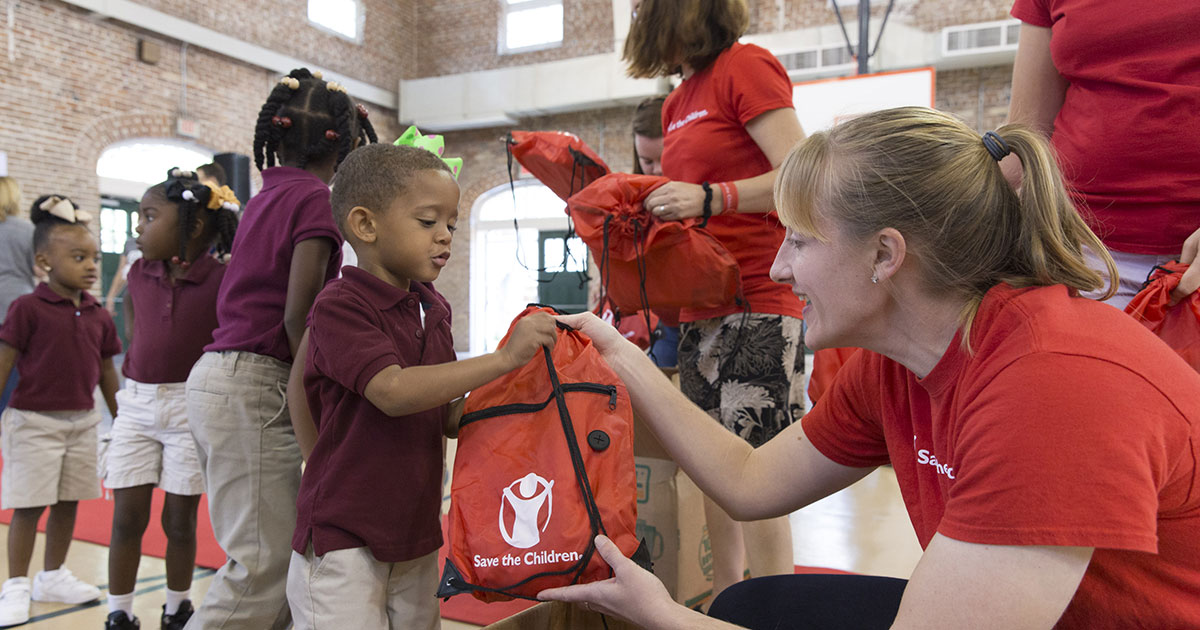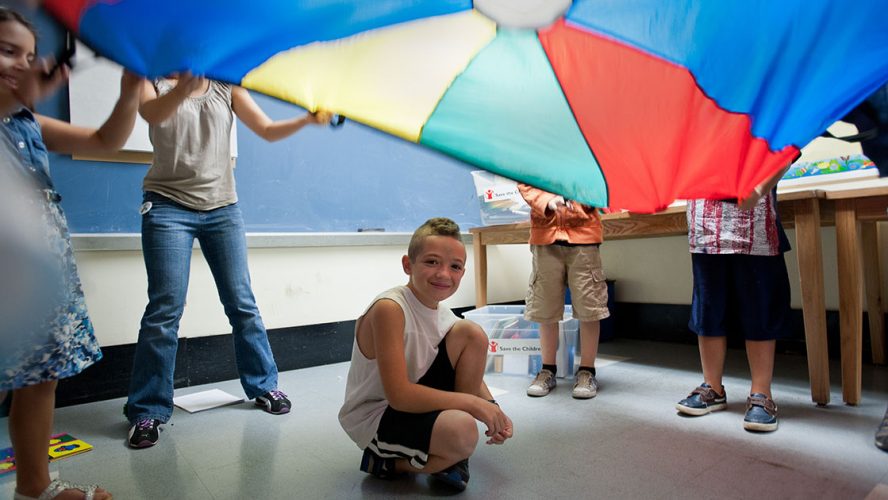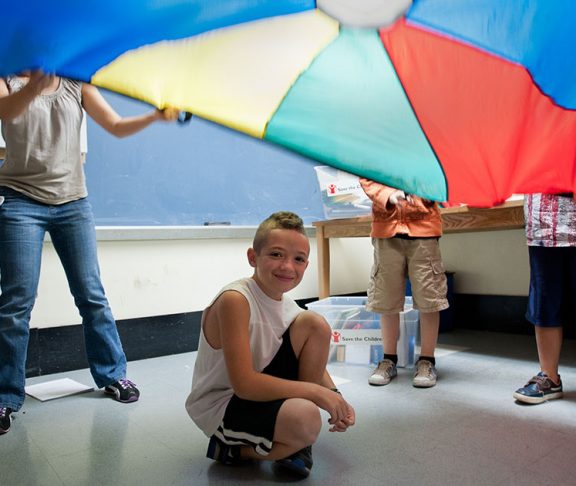
Sarah Thompson
Director of U.S. Preparedness, Save the Children
Long after Hurricane Sandy’s floodwaters receded, Nancy, a Staten Island mother of two, was still seeing the storm’s impact ripple across her family.
“My son comes to me and tells me, ‘Mom, I didn’t want to say anything, but the night of Hurricane Sandy, I was screaming inside. But I didn’t want to show you,’” she said, recalling a conversation with her then 6-year-old son Anthony. “It was a good thing I was sitting down when he told me because my knees would have buckled.”
For months after the storm, Nancy had to make sure she turned off the news when the weather came on to prevent Anthony from hearing there may be another storm looming, even as far away as the West Coast.
Too often, emergency preparedness is limited to an occasional fire drill at school, or we think the topic is too scary for children to think about. However, learning about disasters and how to respond to them helps kids gain a sense of understanding and control over emergencies. Once kids like Anthony know what to do when disaster strikes, they are better equipped to respond quickly and cope.
Talk to your children about disasters, and prepare together.
Be honest
Children may experience stress when they do not understand what they perceive to be dangerous. Kids don’t need to know all the graphic details, but they do deserve answers. Simple, age-appropriate explanations about what happens during disasters can give children a sense of understanding and control.
Listen
You can understand what your child already knows and needs to know about disasters by simply listening to them. Let them express their feelings in a safe atmosphere. A good way to do this is through emergency-themed storybook reading. While reading, children can respond to the character’s experience and knowledge.

Let your child know that disasters are scary and it’s okay to be afraid when thinking about them. Reassure them that during an emergency, many caring adults — parents, teachers and first responders — will be working to keep them safe.
Make it fun
Prepare together as a family. Have supplies hunts or family drills, time them and then try to go faster each time. Or use the Prep Step song and dance to teach children about emergency contacts, emergency plans and how to pack a go-bag.
Being able to talk through and prepare for future emergencies has been a big part of Anthony’s own recovery since Hurricane Sandy. The now-7-year-old boy has participated in Save the Children’s signature emergency recovery program, Journey of Hope, where through a number of interactive activities, he has had a chance to start building his resiliency and get ready for any crisis that may come his way.
“When a storm comes, you need these skills — to cooperate, teamwork — so you can move forward,” Nancy said.

